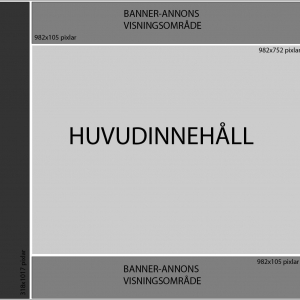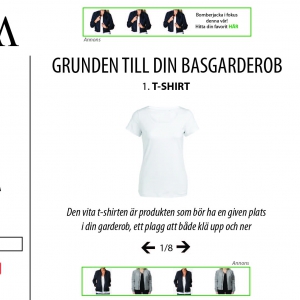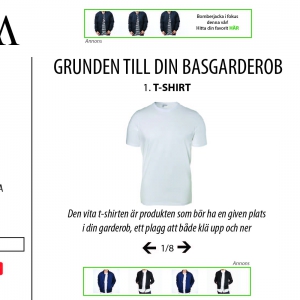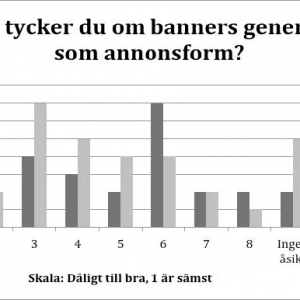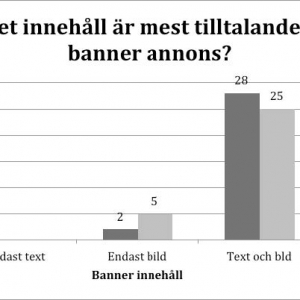Background
In relation to other forms of ads, banner is one of the most appreciated ones. However, phenomena such as banner blindness and ad blocking has evolved, which prevents viewers from embracing the advertisement and act on it. The purpose of this study was to investigate if Generation Y visually records banners on the Internet and see how this generation’s attitudes are towards banners. This was investigated through an eye tracker experiment with a supplementary survey in which the sample was 30 women and 30 men who studied in Borås, Sweden. The result found that men and women in Generation Y register banners, look similarly at them and their attitudes towards banners are more negative than positive. The investigation also found that the content in the form of text, located to the right and below the main content of a website is noticed by the highest number of observers. This indicates that the design of the content and placement are of significance.
Eye Tracking Method
The students used three websites in their eye tracking test. On the test pages there is a congruence between the content on the banners and the main content on the page, in this case of clothes adapted to gender. Congruence refers to the degree of relevance of the content of the ad in relation to the main content of the page where the ad is located.
The test pages consisted of two parts, the main content that is straight forward in the viewer’s field of view and the banner advertising that is around the main content. On the test pages, banners were placed above the main heading in the middle at the top of the page, to the right and in the middle at the bottom of the page. The size of the banner ads was produced in percentage with the standard AdWords size of banners.
Questionnaire
The eye tracking test was supplemented by a questionnaire after a test to find out what the participants remember. Although a shift in focus of the participants’ eyes can be observed through eye tracker and thus see that they fix their gaze on the banner, it does not mean that they are automatically aware that they have seen it. For a banner to be effective, they need to leave an imprint and memory on the viewer so that it can lead to action.
By asking supplementary questions after the test, a higher credibility is given in the answers as it may also be the case that the participant has noted something in the periphery but which the eye-tracker test has not perceived, which then emerges through the participants’ answers in the survey.In addition to this, we have also done the test anonymously so that the test persons would feel comfortable in giving honest answers.This anonymity has been ensured by the participants being given a number on the survey which was linked to a number in the eye-tracker test.
Result
In this study, the students found that generation Y, despite factors such as banner blindness and ad blocking, registers banners on web pages. Furthermore, this generation is negative about banner as an advertising form, because they can be considered disruptive and irrelevant. However, the content of the banner ad can contribute to a more positive attitude by adapting the ad to what the individual considers relevant and interesting.
The study can say with 95 percent certainty that there is no difference between how men and women in generation Y look at banners, based on the respective gender confidence intervals, as these overlap.
The design of the content and placement of the banner affects whether people in generation Y register banners on the Internet. This is partly because text requires longer fixation time to perceive the message in a banner than an image does, so the design of the content is relevant for how long the viewer stays at the ad. The content has a clearer difference in impact than placement, but a difference can still be read, where below and right placement are those that have been most visually registered.
Finally, it appears in this study that the content and placement of the banner influences generation Y’s attitudes towards the banner as an advertising form.

